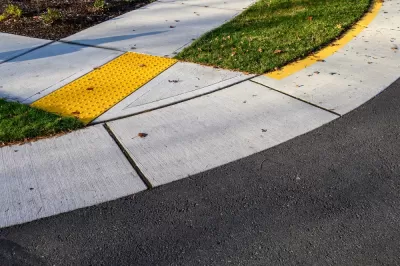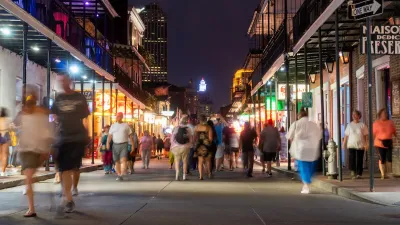After being closed to cars during the pandemic, Rock Creek Park’s Beach Drive has become a haven for people with mobility impairments.

“Urbanism and walkability go hand-in-hand, but what does a walkable city look like for those who need mobility assistance, individuals with cognitive or sensory disabilities, toddlers, and the elderly?” Juliana Schmidt asks in Greater Greater Washington.
Schmidt points out that some activists say the word ‘walkable’ is inherently ableist. “Designing cities to meet the needs of all who live within them should be the bare minimum. Unfortunately, for the nearly 1 billion people in the world with disabilities, this is not the case.”
Schmidt provides examples of ‘universal design,’ interventions that are designed to make places accessible to people with mobility or visual impairments but also bring benefits for other users, such as people pushing strollers or carrying heavy bags. In the case of Washington, D.C.’s Rock Creek Park, Schmidt argues that “Accessibility for cars does not equate to accessibility for people with disabilities.”
Rock Creek Park’s Beach Drive is, when closed to car traffic, a good example of universal design that makes space for vulnerable road users, writes Schmidt. “Road closures free up a lot of space in general, which accommodates larger crowds. This proved helpful when social distancing went into effect during the pandemic, and continues to be beneficial by allowing walkers, runners, and bikers to use the space simultaneously.” With universal design benefiting everyone and harming no one, researcher and disability rights advocate Melissa Thompson wonders, “why is it not the default?”
FULL STORY: How a car-free Beach Drive embodies universal design

Planetizen Federal Action Tracker
A weekly monitor of how Trump’s orders and actions are impacting planners and planning in America.

Maui's Vacation Rental Debate Turns Ugly
Verbal attacks, misinformation campaigns and fistfights plague a high-stakes debate to convert thousands of vacation rentals into long-term housing.

San Francisco Suspends Traffic Calming Amidst Record Deaths
Citing “a challenging fiscal landscape,” the city will cease the program on the heels of 42 traffic deaths, including 24 pedestrians.

Amtrak Rolls Out New Orleans to Alabama “Mardi Gras” Train
The new service will operate morning and evening departures between Mobile and New Orleans.

The Subversive Car-Free Guide to Trump's Great American Road Trip
Car-free ways to access Chicagoland’s best tourist attractions.

San Antonio and Austin are Fusing Into one Massive Megaregion
The region spanning the two central Texas cities is growing fast, posing challenges for local infrastructure and water supplies.
Urban Design for Planners 1: Software Tools
This six-course series explores essential urban design concepts using open source software and equips planners with the tools they need to participate fully in the urban design process.
Planning for Universal Design
Learn the tools for implementing Universal Design in planning regulations.
Heyer Gruel & Associates PA
JM Goldson LLC
Custer County Colorado
City of Camden Redevelopment Agency
City of Astoria
Transportation Research & Education Center (TREC) at Portland State University
Jefferson Parish Government
Camden Redevelopment Agency
City of Claremont





























